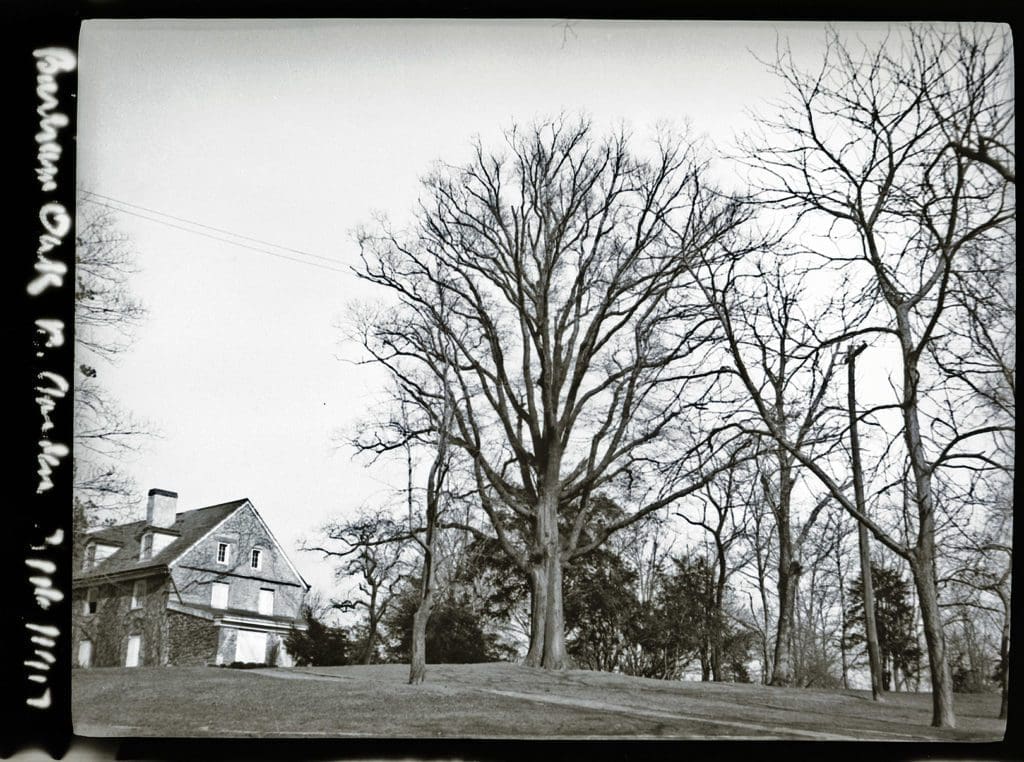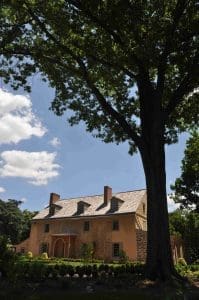Celebrating Our Bartram Oak


Our Bartram oak, Spring 2017
Just over the fence from the Ann Bartram Carr Garden is our Bartram oak (Quercus heterophylla). John Bartram first observed this tree as a single specimen on the banks of the Schuylkill near his farmand garden in Philadelphia, probably in the 1740s. The original example seems to have been located on the large estate on the west bank of the Schuylkill known as The Woodlands, close to the river.
Our Bartram oak isn’t that old. It was planted in September, 1939, as part of a convention of park executives meeting in Philadelphia. Samuel N. Baxter, the chief landscape designer and arborist for the Fairmount Park Commission, arranged for the planting. There is a bronze plaque at the base of the tree, now mostly invisible where the tree has overgrown it. It once said:
QUERCUS HETEROPHYLLA, PLANTED IN MEMORY OF JOHN BARTRAM BY DELEGATES FROM THE UNITED STATES & CANADA AMERICAN INSTITUTE PARK EXECUTIVES, 1939.
According to our records, the tree was grown from a seed of the Bartram oak, by James Gillin Nurseries, Ambler, PA. As a hybrid, seeds from the Bartram oak can resemble either parent oak — red oak or willow oak 25% of the time each, or resemble the Bartram oak 50% of the time. The 19th- and early 20th-century example of Bartram oak—planted either by William Bartram or the Carrs—was located south of the Conservatory wing of the Bartram House. There is now a large cucumber magnolia at the site where the large Bartram oak was growing in the 1917 photo pictured above.
By the way, the other large red oak at the north, just outside the Carr Garden (near the fire hydrant), was planted around 1948 as a memorial tree to Samuel N. Baxter (who died in 1945), and has a bronze plaque about the dedication at the base. This plaque is readable, and mounted on a small raised concrete base.


